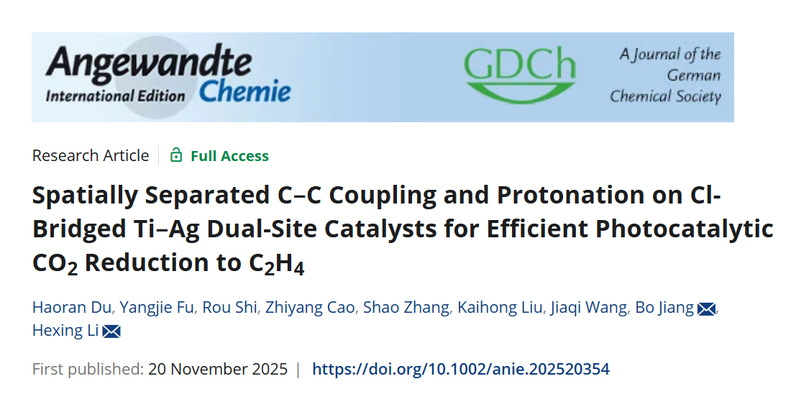Recently, Professors Li Hexing and Jiang Bo from the School of Chemistry and Materials Science published a research paper titled "Spatially Separated C–C Coupling and Protonation on Cl-Bridged Ti–Ag Dual-Site Catalysts for Efficient Photocatalytic CO2 Reduction to C2H4" in *Angewandte Chemie International Edition*.
Photocatalytic CO2 → C2H4 is a "win-win" approach to carbon neutrality, yet it has long been constrained by two major bottlenecks: on the one hand,the high C–C coupling barrier, where *CO intermediates are prone to "escape" or undergo deep hydrogenation to form CH4; on the other hand,the competition between protonation hydrogenation and coupling reactions at the same active site, making product selectivity difficult to control.
Traditional strategies often focus on modulating "single active sites," yet coupling and hydrogenation still involve competing reactions. How to "divide and conquer"?The study provides the answer: using Cl bridges to create "spatial distance," allowing Ti and Ag to each fulfill their respective roles.
This work was funded by the National Natural Science Foundation of China, the Shanghai Natural Science Foundation, the Key Laboratory of Resource Chemistry of the Ministry of Education at SHNU, the International Joint Laboratory of Resource Chemistry, the Shanghai Key Laboratory of Rare Earth Functional Materials, the Shanghai Frontier Science Research Base for Biomimetic Catalysis, and the Shanghai Engineering Technology Research Center for Green Energy and Chemical Technology.




